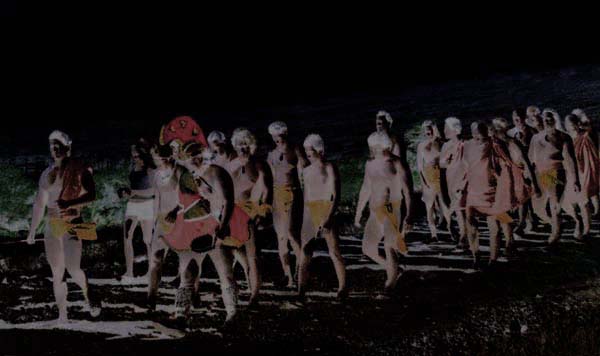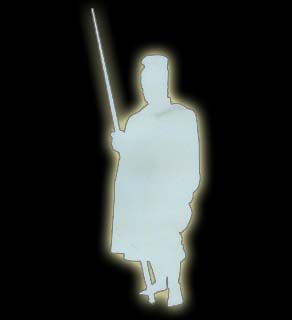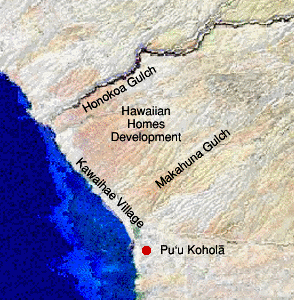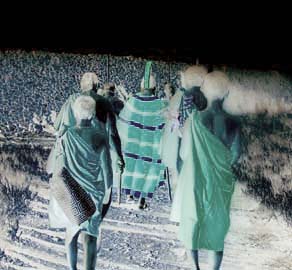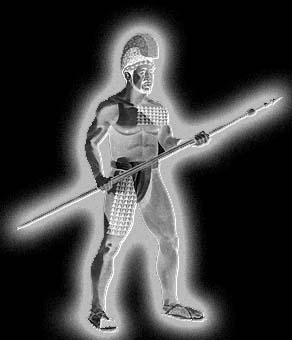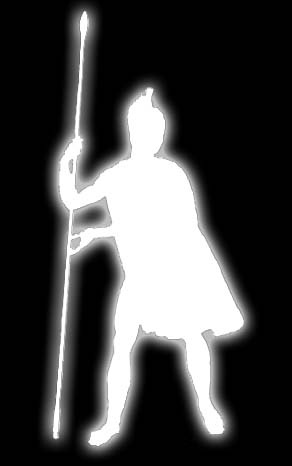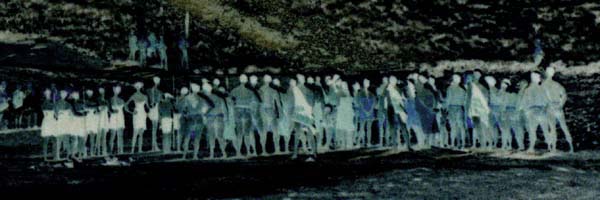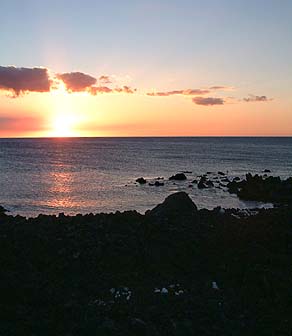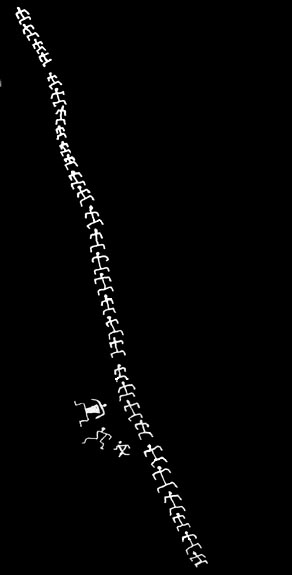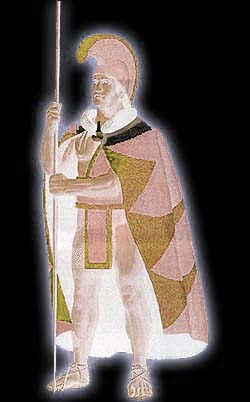 |
 |
 |
|||||
|
|
|||||||
|
|
|||||||
| |
|
|
|
|
“There are the night walkers,” Mel says. “I asked my Grandfather that, because I knew that when he built his house, he took the back section out because of the Night Walkers. They used to walk through the back end of the house. He explained to me that if you put anything in their path, they will walk though it! So he took that section of the house out. He told me the direction that they came from and where they go to.
|
||
|
|
||
“So that path was out the back window, in the back of my bedroom and his bedroom. You see, my grandfather had, I think it was a four bedroom house. So when we would go asleep, he’d go inside his room, he closed two doors and he’d stay on that side. It’s so dark over there, you put your hand in front of you, and you can’t see your hand. “Then I asked him about night walkers, and my question to him, I said, ‘I can see?’ He telling me, ‘Uhhh, yeah. Because you’re ‘ohana [family], it means you’re in the line.’ And I said, ‘How will I know they’re going come?’ He said, ‘You listen, they’re going to come from this side. They come from this side, and you can hear them coming, just like pans crackling, and you can hear like chains dragging.’
|
|
|
“Sure enough, I was sleeping and woke ‘cause I heard all the sounds like Grandpa said. I stood by the window looking out and there they were walking past outside my window. They were walking…and walking slowly. It was not spooky to me. Just knowing that I had a family connection within these Marchers, kept me from being scared. After they went past, I had a sad thought, 'Is this what they would do for the rest of time?' "They emanated from Honokoa Gulch and walked
by my Grandfather’s house and the fish pond towards Pu`ukohola
Heiau. I don’t know their path back.
|
|
|
|
"There are a couple of notions on this," Hannah explains. "Sometimes we hear the term Po-kane, po being night, kane being one of the nights of the Hawaiian lunar calendar, a night when there is no moon. And we hear, especially when I was growing up in Territorial Hawai‘i, Pokane, those were the night marchers. "But if we look to convention of the pre-contact era, on the night when the moon casts no shadow, the ali‘i and the kahuna might go out and do certain activities that, if done during daylight, caused them to cast a shadow, and there would be a whole set of protocols associated of that casting of the shadow. So Pokane becomes a night when the ali‘i and the kahuna might be out and about doing business particular to their station in life: refurbishing heiau, for example. When the term of Ku gives way to the term of Lono, and vice versa, for example. "So the earliest traditions that I heard that were associated with Pokane, were associated with the chiefs and their entourages, who would be out and about on a night when there was no moon."
|
||
|
|
||
"But Po-kane, to the less informed ear, are ‘men of the night’ and what are they doing? They’re marching. But if we scratch a little bit deeper, maybe we are coming to a more complete view of that tradition, and it’s on the night of Kane, associated with the kapu of that night, that the ali‘i and the kahuna would go about doing their business. "So there is that tradition. And there is that whole set of protocols, that if you are set upon by that set of walkers, you prostrate yourself, you’re to give utterance to your genealogy, and if your genealogy is recognizable to those who are walking, you will be spared the thrashing that you might get otherwise."
|
|
|
“When we went to Keawaiki to stay," Ku‘ulei recalls, "there’s no electricity, there’s no water, there’s no nothing. So the night time is very dark, and I remember being on the beach and we would look up towards the mountain. You can feel the wind coming, and in the wind, you can smell the goats coming, a very strong smell. We would lay on the beach and we’d look at the stars and count stars, watch satellites, do all that. It was really interesting, the things you can do without a light. “And I remember seeing lights around the inland and I would always ask my dad, ‘What is that?’ He’d say ‘Oh, those are the night marchers.’ And then when we’d hike on the trail, sometimes we’d go hiking maybe in the afternoon because it’s cool, but by the time we’re coming home it’s getting dark and sometimes we’d walk along the trail, and my dad would say, ‘If you see something or you feel something on you,’ he said ‘just get off the trail.’ And he said ‘Turn your back to the trail, put your heads down.’ Because he had felt uncomfortable at different times in the dark along the trail."
|
“He said, ‘You know, it’s funny people don’t believe it,’ but he said, ‘How many nights we sit out on the patio of the house and we look and we can see lights like they’re walking and walking, and walking. You know, you know there’s nobody out there, there’s nobody for miles.’ I mean the next neighbor might be two beaches down. Very few people had four wheel drive to drive in. Keawaiki had no road in, and was only by boat access. My dad said ‘How is it possible for those lights to be there? What is it?’ “So I believe that it probably is true. I don’t question it, and it doesn’t bother me. We always need to respect that, and know about it, and know what to do. Sometimes we’d be out there and it would be dark by the time we got home. "I asked my dad years later, ‘Well, did you always say that stuff to scare us?’ He said, ‘No, not really.’ I said ‘Well, did you believe it?’ He goes ‘To an extent, yeah.’ He said, ‘If you don’t believe it then you should respect it anyway. Those are people who were here way before us and we don’t know.’ I believe that there is some truth to that.”
|
|
|
|
|
|
“Night marchers, the menehune. They’re still there,” ‘Ilima says. “We had a Japanese friend, Kaneshiro, and he used to take care of the Brown’s house in Keawaiki, and they say that the house was built on a Hawaiian trail. And there were some days I remember he’d come to our house in the morning, and he was just so upset. He’d come in and Mom and Dad talking—he was Japanese, but he could speak Hawaiian—and he was just talking in Hawaiian, and when he got done cursing and whatever, he would tell the story. "Says he woke up in the morning, he was out on the outside of the house. What happened, they marched through the house and actually carried him out and put him out in the yard and they did this several times. You know, they took him out of the house and just set him, never hurt him. That’s the amazing thing about it. Never hurt him, but they stepped on his chest several times. And threw him out of the house.”
|
||
|
|
||
“I understand that some people did get hurt. I mean, they would stomp on you. If this your bedroom happened to be on the trail, and you’re asleep, they would stomp all over you and walk right through. At the Waikoloa Hilton, there is a trail there. Turn right, when you’re driving along that road going towards the hotel you come to a place where there is like a cobblestone path. They made that because the night marchers go through there. “And people have actually seen them. They left that open for them because they were told by the Hawaiian priests, ‘You do not close that area up because you will be sorry.’ So they just made a cobblestone walkway where whoever is walking on it could walk right through. They listened to the Hawaiians, because a lot of things happened when they were constructing. So it’s not only legend. In some cases it’s actually reality. “In Kawaihae, was there an actual trail that people knew where it was. And they respected that. The old Hawaii people respected that. I’m not even sure if it still exists now. Because there are so many things that have been built there."
|
|
|
“You see this house over here?” Pua says. “Certain time of the year, you will see at night, before midnight, the darkest time of night, you will see tiny little lights walking, because that’s the pathway. “And the same goes up there, up at the new Hawaiian Homes. My niece said ‘Auntie, you know the Hawaiians were out last night.’ I said, ‘Why do you say that?’ She said, ‘Because there was a lot of lights going down the road.’ I said, ‘Whenever you see something like that, you know that’s an old Hawaiian trail, that’s the pathway. And if you’re in the way, they’re going to just walk right over you.’ And the same thing in my home. “They call them the Night Marchers, but I look at them as little menehune going home from the fishing trip, or maybe they go and plant the fruits, bananas or whatever they plant, taro, certain time of the night, and moonlight too, on moonlight they go out and they plant the sweet potato. " I say the main thing is that you don’t bother them. Because the only reason they do that, and they don’t make you scared or anything like that, is because they are going back to wherever they came from. And just let it be.”
|
“There is another tradition," Hannah relates, "that I learned from the old folks at Kaupulehu, associated with one of the winds there. To these folks, that wind would be a portent of the walking of the people of that land. And they tell stories. This one friend, if she were living she would be 103 or 104 now, she tells the story of being a child at the place where Kona Village Resort is now. And the old folks, feeling the wind, secured her with bindings made of flour bags, like binding her to a chair. And they told her to not pay attention to what she would see or hear. “Well, soon she saw a throng of people walking through their kauhale, the place where they stayed, and some of the people she recognized, and they were calling out and inviting them to come with them, but the old folks wouldn’t look and she couldn’t go. "Years later, when she is now a young mother, going down there, she had a similar experience with her son, and so she came full circle in her understanding of the wind and its portent.”
|
|
|
|
|
“Now I was a student intern for the U.S. Geological Survey, and one of the ways that they measure the movement of magma, and the presence of hot water, is through the electromagnetic profile for the landscape. And a theory that I muse on sometimes, is that there is residual energy left over from the people of old; and I wonder if the energy of our culture—literally, all the electronic devises and what not—if that’s disruptive to that older, electromagnetic profile of the land. “We hear less and less of those accounts. I’ve never seen Night Marchers. I have friends who have, and in particular when going holoholo to the north of Kawaihae and just working that coastline at night. I have perceived both visually and audially those that are not there, but not within the context of the night marchers. But there are those pockets….”
|
||
|
|
||
Hannah's remarks about "those that are not there" leads us to other Kawaihae stories about ghosts.hat have been encountered in Kawaihae.
|
||
|
|
||
|
|
|
|
|
|

|
| Kawaihae Home | Map Library | Site Map | Hawaiian Islands Home | Pacific Worlds Home |
|
|
|
|
|
|
